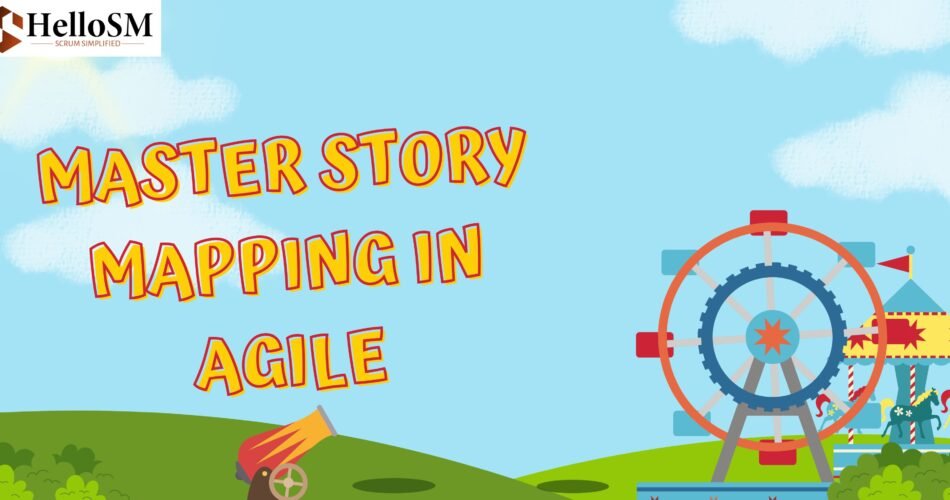Have you ever been in one of those endless Agile meetings where everyone is looking at a confusing list of user stories, trying to understand the relationships? This is precisely the point where story mapping comes to the rescue like a superhero whiteboard instant. Just like that, it makes sense.
In case you were finding it difficult to visualize the users’ journey through your product or the flow of one feature to another, story maps would be a different way for your team to work. It’s not some textbook concept, it’s a hands-on, super-visual tool that makes your product come alive from the user’s perspective.
What Is a Story Map?
Picture a big wall with sticky notes. Across the top, you’ve got steps your user takes like a journey: “first they do this, then that.” Then, going down, you’ve got alternate ways they might do those steps. It’s simple but powerful. You don’t need a fancy tool, a virtual board or paper works fine. The goal isn’t to make it look pretty; it’s to make it clear.
When Should You Create One?
Right at the start of a project. Story maps provide the entire team, developers, designers, and product owners, with the same overview of the product. For instance, if you were to develop an e-commerce site and add a wishlist feature as a new functionality, you would diagram it: users log in, click Add to Wishlist, and check the saved items later. Then, below those main steps, you might add variations like share wishlist, add notes, or sort by category. You don’t need a story map for every small tweak. For something like “add a note field to wishlist,” just drop it in your backlog as a simple user story: If I could do it differently, I would add a note to a wishlist item in order to remember the reason for saving it.
Who needs to attend the story mapping session?
The people who directly or indirectly influence or use the product, the Scrum Team, Product Owner, Scrum Master and, basically, some real users or stakeholders. The Product Owner decides the objective or MVP, whereas the Scrum Master helps and keeps the work going. Getting real users’ feedback is like hitting the jackpot; it keeps the team from making a beautifully wrong product.
How to Build a Story Map?
Start with a big goal or MVP. Something achievable in about three months, big enough to inspire, small enough to deliver. List the main user steps horizontally. Think: login → browse → purchase.
- Add vertical alternatives. Users can log in via Google, email, or OTP. Stack those underneath.
- Prioritize top to bottom. Must-haves go up; nice-to-haves go lower.
- Draw release lines. What’s above the line is MVP; below is for future releases.
- Then read it like a story: “A user logs in, then browses items, then adds to cart, then checks out.” See how natural that feels?
Why Story Maps Work So Well?
Because they make ideas visible. You can see the flow, spot gaps, and notice missing functionality. Ask things like:
- What would a user want to do next?
- Could they get confused here?
- What could go wrong at this step?
- That’s how you catch things early like realizing your expense app should let users attach receipts either by uploading or scanning them. Boom. Two new cards.
Keep It Manageable
If your story map starts stretching across two walls, no worries. Create submaps, smaller, focused maps for specific features like a “checkout process” submap for payment flows. Story maps aren’t about sticky notes, they’re about shared understanding. They turn chaos into clarity and bring empathy back into product development. Whether you’re an Agile coach, Product Owner, or Scrum Master, this is one of those tools that actually makes teams smarter, not just faster.
Frequently Asked Questions
What’s the difference between a story map and a product backlog?
A story map visualizes the user’s journey and helps identify the stories to add to the backlog. The backlog, on the other hand, is where you prioritize and refine those items for development.
Should every Agile team use story maps?
Not for every small update, but definitely when you’re starting something new or significant. Story maps work wonders when defining an MVP or planning a major feature because they create a shared understanding across the team.
